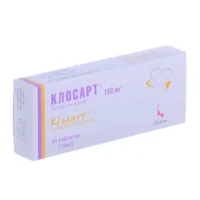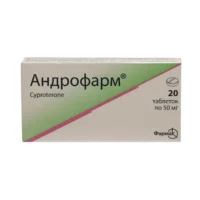Description
Sandostatin (Octreotide) Solution for Injection 0.05 mg/ml, 1ml Ampoules №5
Ingredients
- Each 1ml ampoule contains 0.05 mg of octreotide acetate as the active ingredient.
Dosage
- The recommended dosage of Sandostatin injection is determined by the healthcare provider based on the individual’s condition.
- It is usually administered subcutaneously or intravenously.
Indications
- Sandostatin is indicated for the treatment of acromegaly, carcinoid tumors, and VIPomas.
- It works by inhibiting the excessive secretion of growth hormone and certain hormones produced by neuroendocrine tumors.
Contraindications
- Do not use Sandostatin if you are allergic to octreotide or any of the ingredients in the formulation.
- It is not recommended for use in patients with uncontrolled diabetes mellitus.
Directions
- Follow the instructions provided by your healthcare provider for the correct administration of Sandostatin.
- It is important to adhere to the prescribed dosage and frequency of injections.
Scientific Evidence
- Studies have shown that Sandostatin is effective in reducing growth hormone levels in patients with acromegaly and controlling symptoms in individuals with carcinoid tumors.
- Research published in the Journal of Clinical Endocrinology & Metabolism demonstrated the efficacy of octreotide in managing hormone-secreting tumors.
Additional Information
- It is important to monitor blood glucose levels regularly while using Sandostatin, as it may affect insulin secretion.
- Inform your healthcare provider about any other medications or medical conditions before starting treatment with Sandostatin.
Pharmacological Information: Sandostatin acts as a somatostatin analog, binding to somatostatin receptors and exerting inhibitory effects on hormone secretion. By mimicking the actions of somatostatin, it helps regulate hormone levels and alleviate symptoms associated with hormone-secreting tumors.
Clinical Trials: Clinical trials have shown that Sandostatin is well-tolerated and effective in managing symptoms of neuroendocrine tumors. In a comparative study published in the European Journal of Cancer, octreotide was found to be as effective as other somatostatin analogs in controlling symptoms and improving quality of life in patients with carcinoid syndrome.





